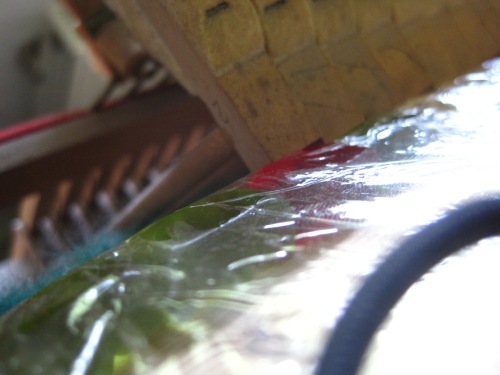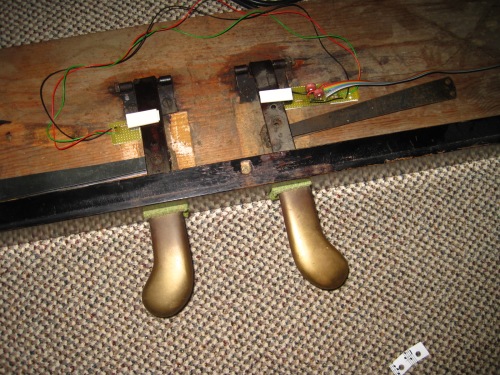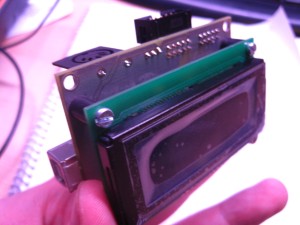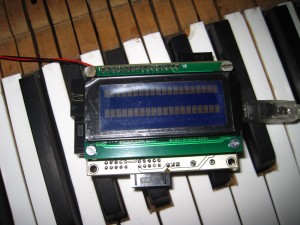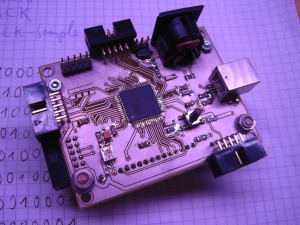Like I mentioned an “Oberdämpfer” is an obsolete kind of piano action, so lets test the new fabricated SMD boards on a modern piano action, shall we?

so these are the missing keys:

First we need a stable ground plate:

strengthened with aluminum profiles:
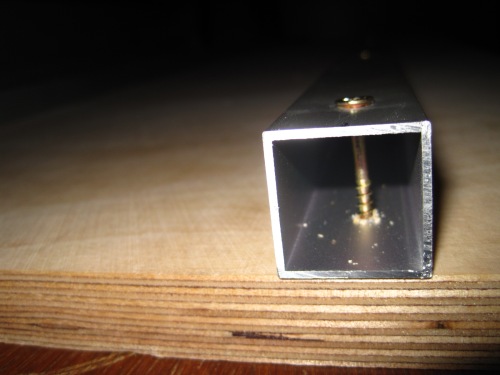
mount the keyframe on it:
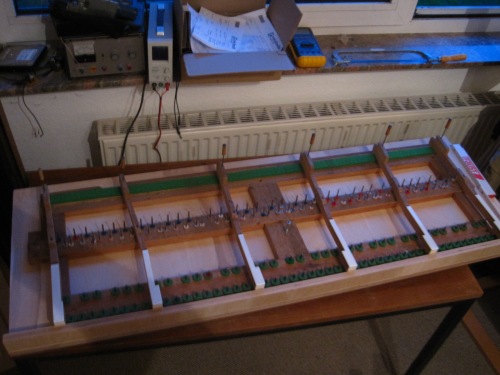
put in the action:
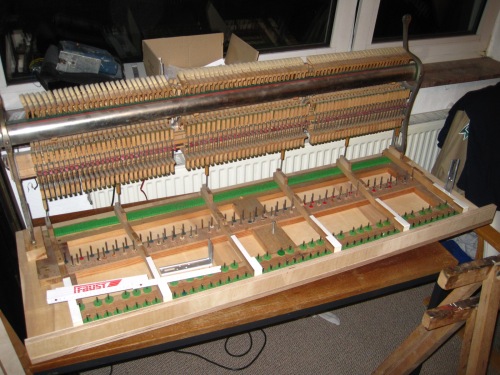
build a holding frame for the action:

glue the sensorboards on an aluminum profile. Here you can see an advantage of the new connector system. you can arrange the boards the way needed for your keyboard. small deviations from the norm are no problems:
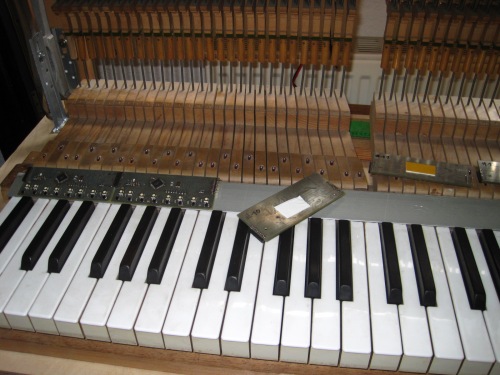
so this is the entire sensor bar on its profile:
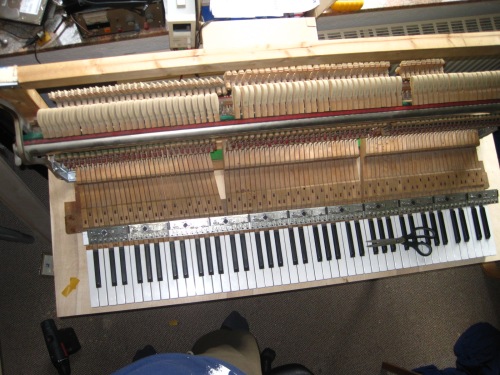

And the final construction (hammer stop bar is still missing):
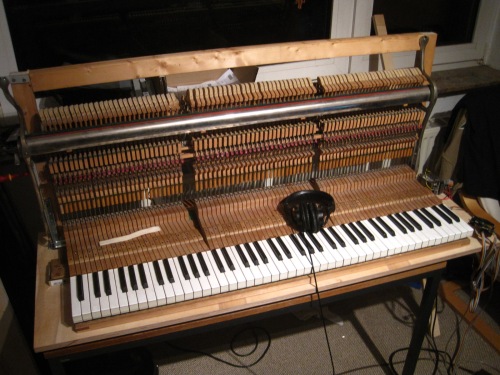
So this baby is ready for some testing, YEAH!
to be continued…



